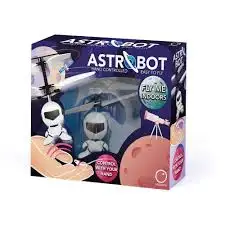Retail News
Date posted: 2025-05-01 02:55:56

Choosing the right pet food for your furry companion is crucial as it directly impacts their health and well-being. Each pet, whether a dog or a cat, has specific dietary requirements based on their age, breed, activity level, and health condition. Puppies and kittens, for instance, require food rich in calories and nutrients to support their rapid growth. On the other hand, adult pets need a balanced diet to maintain their health, while senior pets may benefit from food tailored to their aging bodies. It's essential to consult with a veterinarian to determine the appropriate dietary needs of your pet to ensure they receive all necessary nutrients for a happy and healthy life. When selecting pet food, it's vital to read labels and understand the ingredients. Look for high-quality protein sources at the top of the ingredient list, such as chicken, beef, or fish. The presence of whole grains, fruits, and vegetables indicates a well-rounded diet. Avoid foods with excessive fillers, artificial preservatives, and by-products, as these can detract from a nutritious diet. Additionally, certifications from reputable organizations or feeding trials can help assure you that the food meets quality standards. Lastly, consider choosing brands that provide transparency about sourcing and production practices. Deciphering pet food labels can be challenging for many pet owners. Labels often feature promises of all-natural, grain-free, or vet-recommended, which can be misleading. To effectively evaluate a food product, check for the following: the guaranteed analysis section will tell you the proportions of protein, fat, fiber, and moisture; the ingredient list details what goes into the food, where ingredients are listed in descending order by weight; and the feeding guidelines provide recommendations based on your pet's weight. Being informed about these aspects can help you make the best choice for your furry friend. There are numerous pet food brands on the market, but some stand out for their commitment to quality and nutrition. Brands like Orijen, Acana, and Blue Buffalo have gained popularity for their use of wholesome ingredients and their avoidance of artificial additives. They offer a range of formulas tailored to different life stages and dietary restrictions. It's essential when selecting a brand to consider your pet's unique dietary needs, keeping in mind potential allergies or intolerances. Reading reviews and consulting with fellow pet owners can provide insights into the best choices. In the quest for discovering the ultimate pet food, certain ingredients have risen to prominence due to their nutritional benefits. Look out for ingredients such as high-quality proteins, omega fatty acids for healthy skin and coat, glucosamine for joint support, and antioxidants for a robust immune system. Ingredients like sweet potatoes and brown rice provide sustainable sources of energy, while fruits and vegetables contribute essential vitamins and minerals. Also, consider food rich in probiotics that can aid in digestion and overall gut health. Opting for homemade pet food can ensure your dog or cat receives fresh, wholesome ingredients, but it requires careful planning. Pets need a balanced diet including proteins, carbohydrates, fats, vitamins, and minerals. It's crucial to follow recipes from vetted sources or consult a veterinarian to avoid nutritional deficiencies. Homemade diets can be beneficial for pets with specific allergies or sensitivities, providing tailored nutrition that commercial foods may not offer. However, be prepared for the commitment involved in meal preparation and ingredient sourcing. The pet food industry is continuously evolving, with a growing focus on sustainability and ethical sourcing. Many brands are transitioning to eco-friendly packaging and sourcing ingredients responsibly to minimize their environmental impact. Additionally, advances in technology are leading to innovations like personalized pet nutrition, where food can be tailored specifically to an individual pet's health status and preferences. Staying informed and adaptable can help you provide the best possible nutrition for your furry loved ones in a rapidly changing market.Discover the Ultimate Pet Food That Your Furry Friends Will Love!
Understanding Your Pet's Nutritional Needs
Types of Pet Food Available
What to Look For in Quality Pet Food
Understanding Pet Food Labels
Top Choices for Pet Food
Premium Brands to Consider
Top Ingredients for Optimal Pet Nutrition
Homemade Pet Food: Is It Right For Your Pet?
The Future of Pet Food
FAQ
What type of pet food is best for my pet?
The best type of pet food varies based on your pet's individual needs. Consult your veterinarian for a tailored recommendation. Dry food is typically convenient and supports dental health, while wet food can be more appealing for fussy eaters.
How can I tell if my pet's food is high quality?
Look for high-quality ingredient sources, nutritional adequacy statements, and transparency about sourcing. Avoid foods with excessive fillers, by-products, and artificial additives.
Can I switch my pet's food suddenly?
It's recommended to transition your pet to a new food gradually over several days to avoid digestive upset. Mix the new food with the old food, gradually increasing the ratio of the new food.